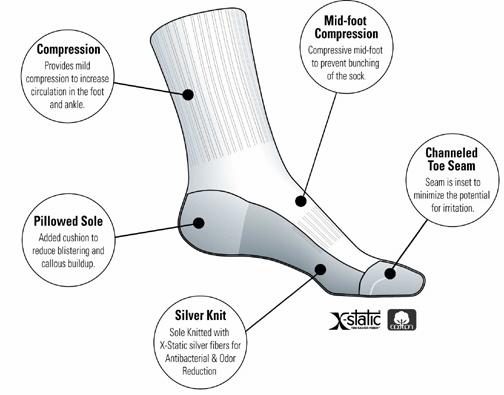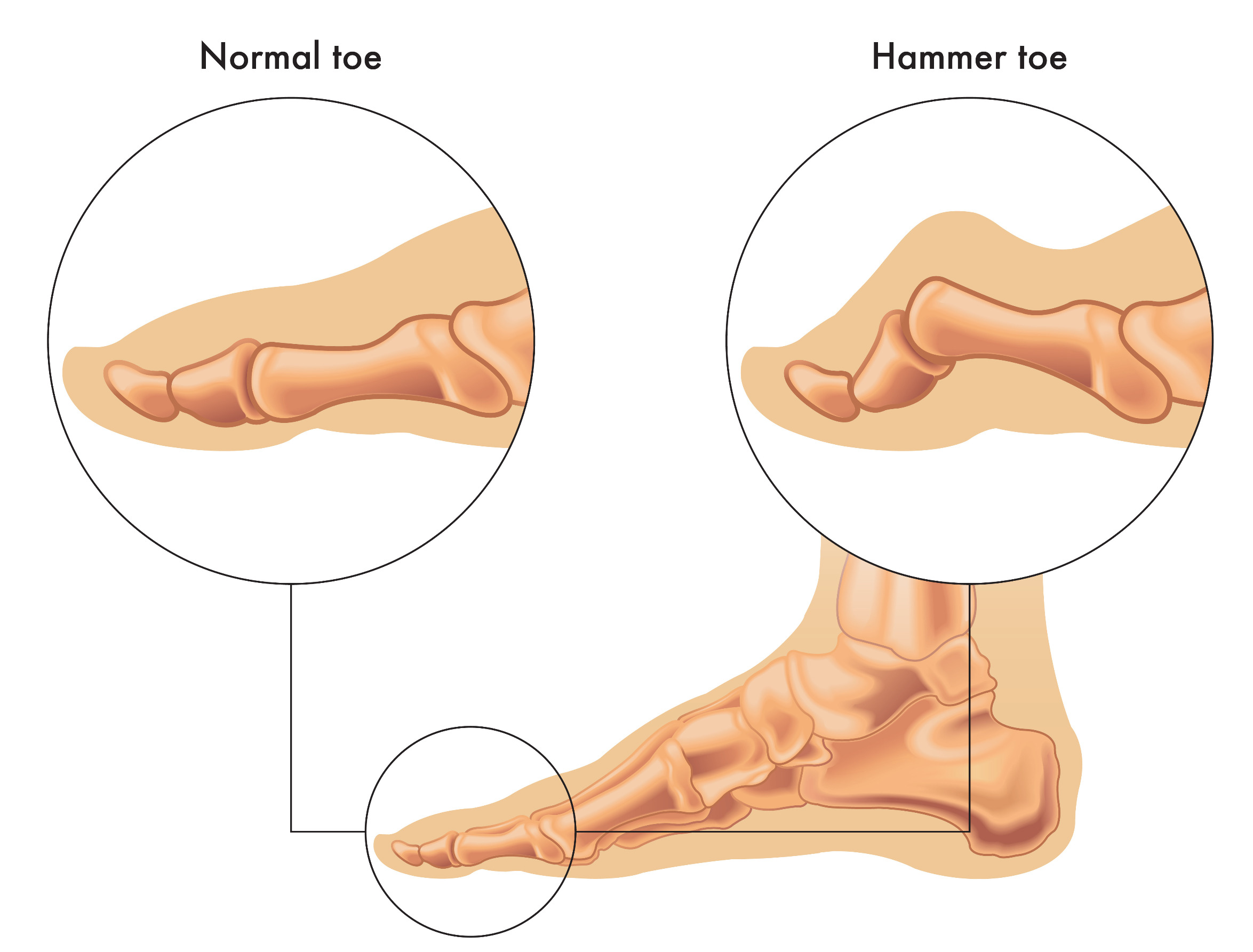Hammer Toe Self-Care Accurate, Exact, To-the-Point Answer:
Wear comfortable shoes and use toe pads or orthotic inserts. Practice toe exercises to strengthen and stretch muscles.
Well-Rounded Hammer toe can cause discomfort and affect daily activities. This condition often results from wearing tight, narrow shoes that push toes into a bent position. Early self-care can prevent the progression of hammer toe and alleviate pain. Choosing the right footwear is crucial for reducing pressure on the toes.
Toe pads or orthotic inserts provide added support and cushioning. Simple toe exercises also help in maintaining flexibility and strength. Consistently following these self-care measures can significantly improve foot health. Taking proactive steps ensures better mobility and comfort.

Credit: www.footankle.com
Introduction To Hammer Toe
Hammer toe is a deformity that affects the toe joints. It typically occurs in the second, third, or fourth toes. The toe bends at the middle joint, creating a hammer-like appearance. This condition can cause discomfort and affect mobility. Early detection is essential for effective self-care and treatment.
Symptoms And Causes
Recognizing the symptoms early can help manage hammer toe.
- Bent toe: The toe bends at the middle joint.
- Swelling: Inflammation around the affected area.
- Redness: Skin irritation and redness.
- Corns and calluses: Thickened skin due to friction.
Various factors contribute to the development of hammer toe.
- Improper footwear: Shoes that crowd the toes.
- Genetics: Family history of foot deformities.
- Injury: Trauma to the toe or foot.
- Arthritis: Joint inflammation and damage.
- Muscle imbalance: Weak muscles causing toe contraction.
When To Seek Professional Help
Professional help is necessary for severe symptoms.
- Persistent pain: Constant pain despite self-care.
- Immobility: Difficulty moving the affected toe.
- Open sores: Sores that do not heal.
- Infection signs: Redness, warmth, and pus.
Early consultation with a healthcare provider can prevent complications. They may recommend physical therapy, medications, or surgery if needed.

Credit: 30seconds.com
Daily Footwear Choices
Daily footwear choices play a crucial role in managing hammer toe. Wearing the right shoes can help reduce pain and prevent further complications. Let’s explore how to select the right shoes and avoid harmful footwear for better hammer toe self-care.
Selecting The Right Shoes
Choosing the right shoes is essential for hammer toe care. Look for shoes with the following features:
- Wide Toe Box: Ensures toes have enough space to move freely.
- Low Heels: Reduces pressure on the front of the foot.
- Arch Support: Provides stability and comfort.
- Adjustable Straps or Laces: Helps to secure the foot without squeezing.
Consider these shoe brands known for comfort and support:
| Brand | Key Features |
|---|---|
| New Balance | Wide toe box, good arch support |
| Brooks | Adjustable fit, cushioned sole |
| Orthofeet | Customizable fit, extra padding |
Avoiding Harmful Footwear
Some types of footwear can worsen hammer toe symptoms. Avoid these shoe types to protect your feet:
- High Heels: Increase pressure on toes, causing more pain.
- Pointed Shoes: Squeeze toes together, worsening the condition.
- Stiff Shoes: Lack flexibility and can cause discomfort.
Flip-flops and slippers also lack support and can be harmful. Opt for shoes with a firm sole and good arch support instead.
Following these tips can significantly improve your hammer toe condition. Choose wisely and prioritize foot health every day.
Home Remedies For Relief
Hammer toe can cause discomfort and pain. Trying home remedies may help. These methods can provide relief and improve your foot health.
Ice Packs And Warm Soaks
Alternating between ice packs and warm soaks can reduce pain. Use an ice pack for 15 minutes. Then, soak your feet in warm water for 15 minutes.
Repeat this process a few times daily. This helps reduce swelling and relax muscles.
Over-the-counter Solutions
Several over-the-counter solutions can aid hammer toe relief.
- Anti-inflammatory creams: These can reduce pain and swelling.
- Foot pads and cushions: These provide comfort and alleviate pressure on the toe.
- Toe separators: These help align your toes correctly.
Always follow the instructions on these products. Consult a pharmacist if you have any questions.
Exercises To Strengthen Your Toes
Hammer toe can cause pain and discomfort. Regular exercises can help alleviate these symptoms. Strengthening your toes can improve flexibility and reduce pain. This section will guide you through effective exercises.
Stretching Routines
Stretching your toes daily can improve flexibility. Try these simple routines:
- Toe Stretch: Sit comfortably and extend your legs. Use your hands to gently pull your toes back towards your ankle. Hold for 10 seconds and repeat 5 times.
- Toe Flex: Sit with your feet flat on the floor. Lift your toes up, spread them apart, and then bring them back together. Repeat this 10 times.
Strengthening Exercises
Strengthening exercises can build muscle in your toes. This can help reduce the risk of hammer toe. Here are a few exercises to try:
- Towel Scrunch: Place a towel on the floor. Use your toes to scrunch it up towards you. Repeat 10 times with each foot.
- Marble Pickup: Spread some marbles on the floor. Use your toes to pick them up and place them in a bowl. Do this for 5 minutes with each foot.
- Toe Taps: Sit with your feet flat on the ground. Tap each toe individually on the floor. Do this for 2 minutes per foot.
Incorporating these exercises into your daily routine can help manage hammer toe symptoms. Consistency is key to seeing results.
Protective Pads And Inserts
Hammer toe can be painful and uncomfortable. One effective way to manage this condition is by using protective pads and inserts. These simple devices can provide significant relief and improve foot comfort. They help cushion and align the toes, reducing pain and preventing further damage.
Types Of Pads
There are various types of pads available for hammer toe relief. Each type serves a specific purpose and can address different aspects of the condition.
- Cushion Pads: These pads offer extra cushioning and relieve pressure.
- Gel Toe Caps: These caps fit over the toe and provide comfort.
- Toe Separators: These devices keep toes apart and aligned properly.
- Metatarsal Pads: These pads support the ball of the foot and reduce pain.
How To Use Them Effectively
Using protective pads correctly is crucial for optimal relief. Follow these steps to ensure proper use.
- Choose the Right Pad: Select a pad that addresses your specific needs.
- Clean Your Feet: Always start with clean, dry feet to avoid irritation.
- Place the Pad Properly: Position the pad directly on the affected area.
- Wear Comfortable Shoes: Ensure your shoes provide enough space for the pads.
- Check Regularly: Inspect the pads and your feet daily for signs of wear or irritation.
Protective pads and inserts can make a significant difference. Choose the right type, use them correctly, and enjoy the relief.
Importance Of Proper Foot Hygiene
Proper foot hygiene is crucial for maintaining healthy feet. It’s especially important for those with hammer toe. Keeping your feet clean can prevent infections and other complications. This section will guide you on how to take care of your feet daily.
Daily Cleaning And Care
Daily cleaning is essential for foot health. Follow these steps for effective foot hygiene:
- Wash your feet with warm water and mild soap.
- Scrub gently between your toes.
- Rinse thoroughly to remove all soap.
- Dry your feet completely, especially between the toes.
Moisturizing is also important. Use a good foot cream to keep your skin soft. Avoid applying cream between the toes to prevent moisture buildup.
Preventing Infections
Preventing infections is key to keeping feet healthy. Here are some tips:
- Wear clean socks every day.
- Choose breathable footwear to reduce moisture.
- Keep nails trimmed and clean.
- Avoid walking barefoot in public places.
If you notice any signs of infection, consult a healthcare professional immediately. Symptoms include redness, swelling, and foul odor.
Proper foot hygiene can make a significant difference in managing hammer toe.
Lifestyle Modifications
Hammer toe can cause discomfort and pain. Making lifestyle modifications can help manage symptoms. These changes can ease the condition and improve comfort.
Weight Management
Maintaining a healthy weight is crucial. Excess weight puts pressure on your feet. This pressure can worsen hammer toe symptoms.
Here are some tips for weight management:
- Eat a balanced diet with fruits and vegetables.
- Include whole grains and lean proteins in your meals.
- Avoid sugary drinks and snacks.
- Stay hydrated with water.
Avoiding extra weight can reduce stress on your feet. This can help prevent the worsening of hammer toe.
Activity Adjustments
Adjusting your activities can help manage hammer toe. Certain exercises can help stretch and strengthen foot muscles.
Consider these activity adjustments:
- Perform toe stretches daily.
- Practice picking up objects with your toes.
- Avoid high-impact activities like running.
- Choose low-impact exercises like swimming or cycling.
These adjustments can relieve pressure on your toes. It can also improve foot flexibility and strength.
Remember to wear proper footwear. Shoes should have a wide toe box and good arch support. Avoid high heels and tight shoes.
Making these lifestyle changes can help manage hammer toe symptoms. It can also improve your overall foot health.

Credit: capitalareapt.com
When To Consider Surgery
Dealing with hammer toe can be challenging. Sometimes, Hammer Toe Self-Care may not be enough. This section guides you on when to consider surgery for hammer toe relief.
Evaluating Your Condition
Before opting for surgery, evaluate your condition carefully. Persistent pain and difficulty walking are red flags. If your toe is rigid and can’t be straightened, surgery might be necessary. Self-care options like padding and orthotics may provide relief. But, if these fail, surgery could be the next step.
Understanding The Procedures
There are various surgical options for hammer toe. Each has its own benefits and risks.
| Procedure | Description | Recovery Time |
|---|---|---|
| Arthroplasty | Removal of part of the joint | 2-4 weeks |
| Arthrodesis | Fusion of joints | 6-8 weeks |
| Tendon Transfer | Tendon repositioning | 4-6 weeks |
Consult your doctor to choose the right procedure. Arthroplasty involves removing a part of the joint. This can relieve pain and restore mobility. Arthrodesis fuses the joint to correct the toe’s position. It’s ideal for severe cases. Tendon Transfer repositions tendons to straighten the toe. This option is less invasive.
Each procedure has its own recovery time and success rate. Make sure to discuss these with your doctor. This will help you make an informed decision.
Frequently Asked Questions
How Can I Straighten My Hammer Toes Naturally?
Perform toe stretches and exercises daily. Wear shoes with a roomy toe box. Use toe separators. Avoid high heels.
Can You Fix A Hammer Toe On Your Own?
No, you cannot fix a hammer toe on your own. Seek medical advice for proper treatment and care.
Will Hammer Toe Go Away On Its Own?
Hammer toe usually does not go away on its own. Early intervention can help manage symptoms and prevent worsening. Consult a doctor for treatment options.
How Can I Make My Hammer Toe Feel Better?
To alleviate hammer toe pain, wear comfortable, roomy shoes. Use orthotic inserts or pads. Perform toe stretches and exercises. Apply ice to reduce swelling. Consider over-the-counter pain relievers. If pain persists, consult a podiatrist.
Conclusion
Taking care of hammer toe at home can ease discomfort and prevent worsening. Regular exercises and proper footwear are key. Always consult a healthcare professional for persistent issues. By following these self-care tips, you can manage hammer toe effectively and maintain foot health.




Leave a Reply